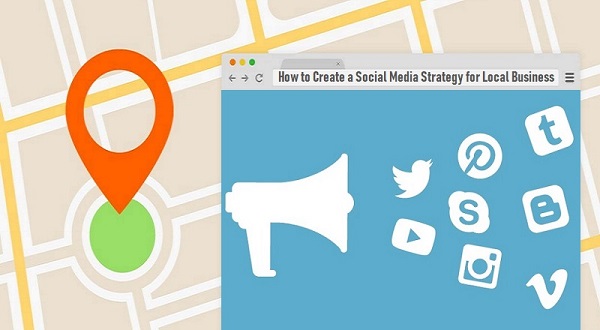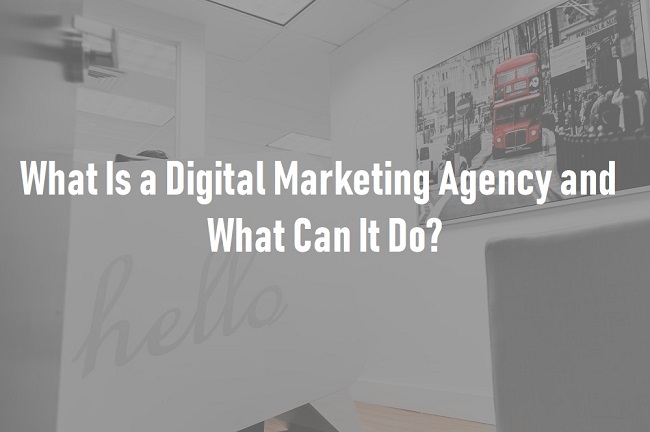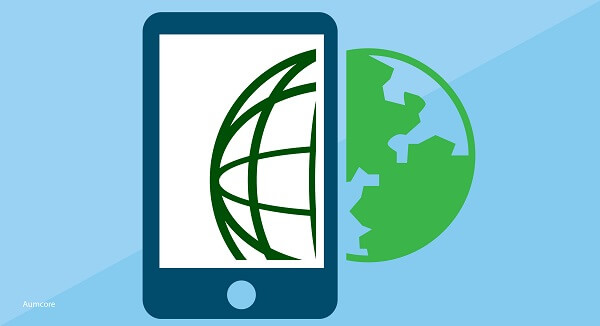“The lovechild of the World Wide Web is social media, which comes in many forms, including blogs, forums, business networks, photo-sharing platforms, social gaming, micro blogs, chat apps, and last but not least social networks.”
The quote above comes from Statista, who reports that the number of monthly active social media users worldwide is expected to climb to a little over 3 billion by 2021 — quite a big number when you consider that it represents around a third of our planet’s entire population.
As for the social landscape today, Statista is reporting that there are about 2.62 billion worldwide social media users — again, not a number to frown on.
Do you know what else that number represents? Potential customers.
True, not every social media user in the world can be considered as your audience, after all, our discussion today centers on local businesses, but very fact that there are so many social users does point to a very enticing conclusion for you: if you’ve been looking for a way to reach your audience, social is the way to go.
Social Media for Business
Businesses everywhere, whether SMBs or large enterprises, whether tech or fashion, are diverting funds to social media management in an effort to sway their audience and get them to convert.
Unfortunately, that’s not happening for a large percentage of them for one simple reason: they’re solely using social media as an advertising channel, pushing sales pitches down their users’ throats.
Wrong. No one likes being peppered with ads or pitches.
Social media marketing should be more of a back and forth relationship. Both—you and your audience—invest time maintaining it, and both get something out of it.
Whereas you get likes, shares, comments and, eventually, conversions, they get valuable content they can use.
For example, if you’re a fashion brand, instead of constantly posting about this new pair of pants, or that upcoming shoe collection, you can publish blog posts outlining how to dress for certain events or occasions, infographics outlining which tops pair well with which bottoms, and a whole myriad of other things your audience can actually make use of.
In doing so, you’ll not only foster brand loyalty amongst your users, but also position yourself as an authority figure in your niche, which both function to push your audience to convert.
That being said, you’re probably wondering how exactly that can be done—specifically, what the best social media marketing strategy for small businesses is.
Your Very Own Social Media Marketing for Local Business Strategy
So, you want to know how to market on social media as a local business? Lucky for you, you’ve come to the right place.
Before we get to that, let’s cover some industry stats to give you an idea on what your competition may be doing so you can know what to expect. More specifically, how much time and money they’re spending on social media:
- 43% of small businesses spend about 6 hours per week on social media.
- How much time are you currently spending, or are anticipating on spending?
- 55% of small businesses have blogs, and the average post takes about 1-3 hours to create.
- Do you have a blog section on your site? If not, you better get on it!
- $26 is the minimum that most small businesses pay per month on social media tools.
- This seems like a small price to pay for all the benefits you can gain from social media.
With that fresh in your mind, let’s get started on your local business social media strategy.
Step 1: Find Your Audience’s Social Platform of Choice

As of July 2018, the most popular social media platform was Facebook, with an estimated 2.2 billion users around the world. Close on its heels was YouTube, with 1.9 billion, and then a couple of spots down was Instagram (1 billion), Twitter (336 million), and LinkedIn (294 million).
This tells you a couple of things, namely that, because Facebook is the most popular of the social media bunch, it’s the social channel you should be devoting most of your efforts.
Wrong Channel
Let me reiterate in case you didn’t catch that. Focusing on a particular social channel simply because it has large audience as a whole IS NOT WHAT YOU NEED TO DO.
In fact, that’s a very big mistake way too many brands make when starting out with social media. They assume that simply because Facebook has the largest audience, it’s where the majority of theirs will be.
While this may be true for some, it’s not true for all — far from it.
Truth be told, you don’t even need to focus on the top three, four, or even five social media channels.
You need to focus on the social channel your audience is on.
Look at it this way, if, for whatever reason, the majority of your audience is (still) on Myspace, does it make sense to spend the vast majority of your time on Facebook just because the majority of the general population is there?
Absolutely not. If your audience is on Myspace, you need to be on Myspace.
Keep in mind that this doesn’t mean you should spend all of your time there — not at all.
Instead, you have to find the platform(s) of their choice, and devote most of your time/resources there, and then the rest on the other social platforms.
At this point, you may be thinking, “okay, sounds good, but how can I know whether my audience prefers Facebook over Instagram? Twitter over Pinterest? Can I just ask them?”
Yes, you can always ask them with a survey, but it’s probably easier to use one of the many social media tools out there, which can also give you other helpful insights, such as what your competitors are up to, which keywords you should be targeting, and so on.
For example:
Ahrefs
Technically speaking, for what we’re aiming to do today, you’ll benefit most from Ahrefs’ Content Explorer, which allows you to discover the most popular content for any topic (by backlinks, organic traffic and social shares):
- Backlinks: Shows how many unique websites are linking to a particular post
- Organic Traffic: Shows how many visits a given post is generating from search each month
- Social Shares: Collected from Twitter, Facebook and Pinterest
To start, all you have to do is enter a competitor’s domain and click search. Doing that, you’ll want to focus on the social stats concerning how many shares their content is getting on each platform.
Because they’re your competitors—meaning you share an audience—you can use that information to find the social platforms with the most activity.
BuzzSumo
BuzzSumo lets you analyze what content performs best for any topic or competitor, and all you need to do enter a competitor’s domain or a keyword of interest.
For example, upon clicking the search button for a given keyword, you’ll see the most shared content for it, and its popularity on various social networks. Similar to Ahrefs, these are the channels to focus on.
Step 2: Post Content Your Audience Will Find Valuable

Like we covered in the beginning, social media is all about back and forth — you scratch my back, and I’ll scratch yours.
To that end, you’ll need to post quality content that will both entertain and educate your audience, which, again, fosters brand loyalty and positions your brand as an authority figure that can be trusted.
This doesn’t mean that all you can post is valuable content, though. After all, you are a business, and as a business you need to make money.
What this means is that you should vary your content.
For instance, for every promotional post, share three or four valuable posts that benefit your audience more than they benefit you.
Step 3: Combine Social Media and Your Local Business
Finally, you’re a local business with a social presence.
That is to say, you have to marry the two to get the most from each.
To start, encourage foot traffic at your offline store to connect with your social channels, and then encourage your social audience to visit your store (or vice versa).
For the first, you can use window decals alerting foot traffic they can connect with you online, QR codes that direct them straight at your social channels, or include an extra line with their receipts telling them where to connect with you.
For the second, it’s as easy as posting about your business with deals, offers, or other incentives that’ll encourage them to exchange a like for a purchase.
Final Thoughts
Trying to grow your local business may be a daunting task, but it’s far from impossible when you use social media.
For starters, you’ll first want to find your audience’s social platform of choice so you know where to expend most of your efforts.
With that information, you can start posting value-added content and, to a lesser extent, promotional content.
Finally, once you’ve established a strong social presence, you’ll want to guide them toward your brick and mortar store, and your foot traffic to your social channels. As a social media agency in New York, we can help you craft and implement strategies to grow your local business and drive meaningful engagement.





Tell us your thoughts in the comments